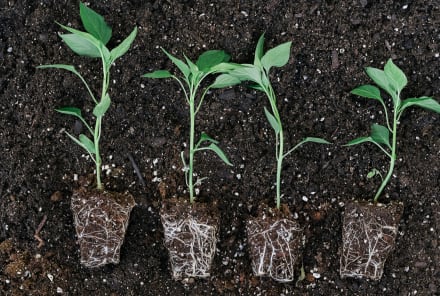Advertisement
Freaked Out By Seaspiracy? 6 Sustainable Seafood Lessons The Documentary Missed


This World Ocean Day falls during a trying time for the seafood industry. In the past year, COVID-19 has threatened worker safety at fisheries worldwide, demand for seafood has seesawed, and international fish trade has screeched to a halt in some places. Then came Seaspiracy.
The documentary, which was released on Netflix in late March, shines a light on the fishing industry's many dark sides: Overfishing, plastic pollution, inaccurate labeling, and human rights abuses are all covered within the 90-minute flick.
In casting such a wide net, many ocean experts are saying that the film oversimplified (and at points, misrepresented) a complicated industry. Perhaps the most contentious part of the movie has been its thesis: In order to save our oceans, it says, we need to stop eating fish.
Is it possible to eat fish sustainably?
Given that today's industrial fishing industry is unsustainable, quitting seafood seems like a reasonable choice. But, like all environmental issues, this one isn't so black and white.
For starters, giving up seafood is not an option for everyone: "To opt for vegetarianism and veganism is a very respectable position, and it may (have to) become a majority decision in the coming years," Daniel Pauly, Ph.D., an acclaimed fisheries biologist, writes of Seaspiracy on Vox. "But right now, this is a position that only a small fraction of the population of wealthier countries will take."
On the other hand, many people living in developing coastal towns depend on the sea for their livelihood. Fishing also holds spiritual value for Indigenous populations around the world. Asking these communities to stop fishing is unrealistic, not to mention culturally insensitive.
Instead of criticizing these smaller-scale fisheries, we should be learning from them. "You really can't talk about global seafood without taking the time to understand that small-scale fisheries are so critically important," Gabrielle Lout, M.A., a marine advocate and Ph.D. candidate in conservation at Arizona State University, tells mbg. According to the United Nations, around 90% of the 35 million fishers worldwide operate on a small scale: Unlike the huge operations depicted in Seaspiracy, they use relatively low-tech methods to catch fish close to shore.
When done strategically—with an understanding of how many fish need to stay in the water to keep that ecosystem healthy and thriving—small-scale fishing is "sustainable" in the most basic sense: It can be sustained into the future without causing environmental damage.
"[The movie] made the point that there's no such thing as sustainable fishing, but sustainable fishing actually exists," De'Marcus Robinson, an ocean sciences Ph.D. candidate at UCLA, tells mbg. The question is whether it's possible to feed the planet using these small-scale principles, or if fishing on a massive scale will always require cutting corners. Robinson thinks there's a way. But, he tells me, "you have to change the system."
How to push for a more responsible seafood industry.
If it's an option for you, reducing the amount of fish that you consume (or cutting it out altogether) is certainly one way to change the seafood industry.
On the bright side, if enough people did so, it would ease pressure on our severely overtaxed oceans and reduce the rate of overfishing, giving marine ecosystems time to recover.
On the other hand, it might not be the most sustainable diet option purely from an emissions standpoint, depending on what you replace that fish with. (A burger will almost always have a higher carbon footprint than a plate of fish, for example.) It also puts fishing industry jobs in jeopardy and potentially has a negative impact on coastal communities.
As you can see, there are trade-offs, always. Ultimately, being a sustainable consumer is sometimes less about cutting out what you don't want and more about supporting what you do. Here are six ways anyone can vote for the seafood industry they want to see:
What fish eaters can do:
Shop locally if you can.
If you live close enough to the coast, getting to know your local fishers and buying from them is the way to go. Getting closer to your food source will ultimately reduce your risk of buying fish that were caught using unsavory practices. "You're removing some of these complexities when you narrow down the supply chain you're purchasing from," Lout says. "If you can't support local, support domestic."
California, Alaska, and British Columbia have particularly strict laws on fishing yields, so those in North America can look out for fish from these areas.
Look into: Sea Tales salmon (Alaska), Skipper Otto (Canada)
Consume lower on the food chain.
Eating smaller fish like mackerel, clams, mussels, sardines, and anchovies can take pressure off larger fish species that are more prone to overfishing, like salmon and tuna. These tiny fish are also abundant, quick to rebound, and super healthy.
Look into: Scout canned seafood, Patagonia Provisions, Bela
Look for certifications.
While an industry as expansive as global seafood will always be impossible to perfectly regulate, look for Marine Stewardship Council, Aquaculture Stewardship Council, and Fair Trade certifications; they can all be great starting points when you're on the hunt for a seafood company you can get behind.
Once you've found a company that you like, stick with them. "Sustainable fisheries are so valuable. People should really support them the same way that they support small businesses, artisanal coffee, artisanal chocolate, etc.," Lout says.
Choose the right species.
Monterey Bay Aquarium's Seafood Watch is a great resource for finding fish species that have a lower environmental impact—be it because they are abundant in a particular region, not associated with bycatch, or farmed using sustainable practices.
What everyone can do:
Educate yourself.
If Seaspiracy piqued your interest in the seafood industry, Ghost Fleet, The End of the Line, and Artifishal are documentaries that provide some more context on its challenges and potential solutions. Eat Like a Fish and Future Sea are books to look into, while the FisheryProgress Newsletter provides a deeper dive into fishing industry updates.
Push for policy.
Adopting well-designed policies that regulate how much of the ocean we can use for fishing is the ultimate goal, and it's one that fish-eaters and non-fish-eaters alike need to join forces to support.
To support better policy, look into where your local and national politicians stand on ocean conservation (would they support a Blue New Deal?), volunteer with NGOs in your area pushing for change, and stay informed and vocal about any new water policies in your area.
"The solution doesn't come from people," says Robinson. "The solution comes from the policies and the governance." When paired with strong enforcement, designations like Marine Protected Areas will ensure that generations to come have a World Ocean Day worth celebrating.











